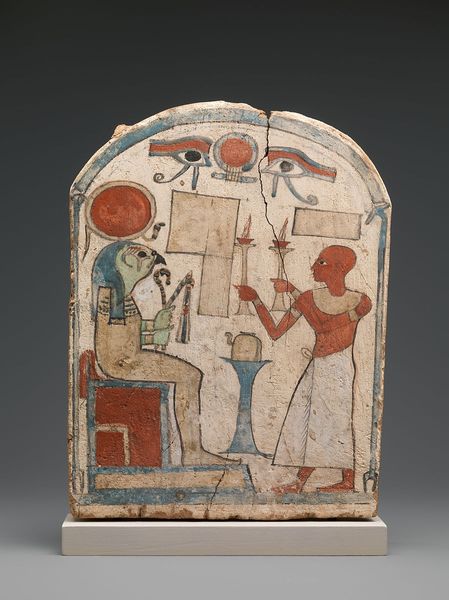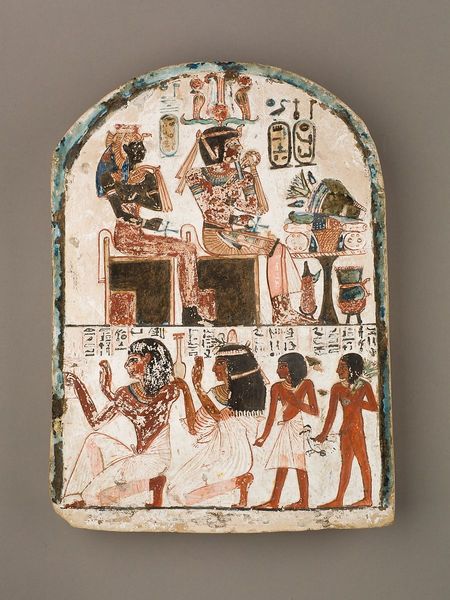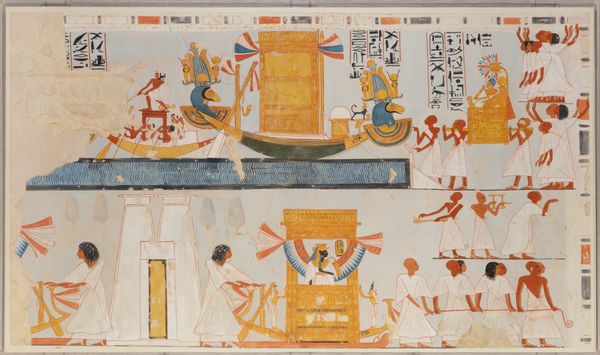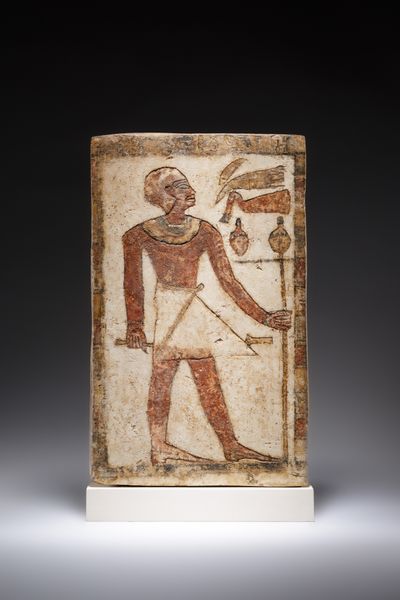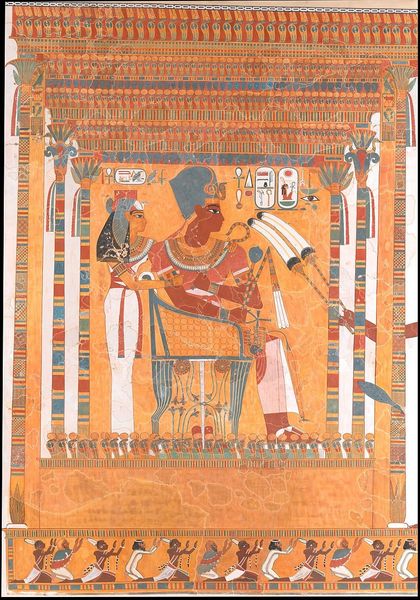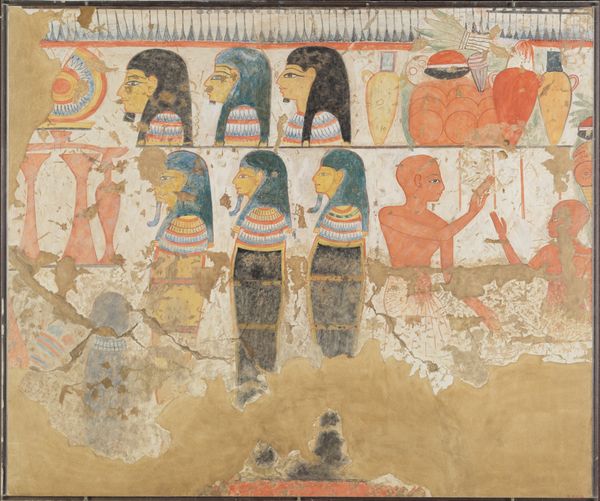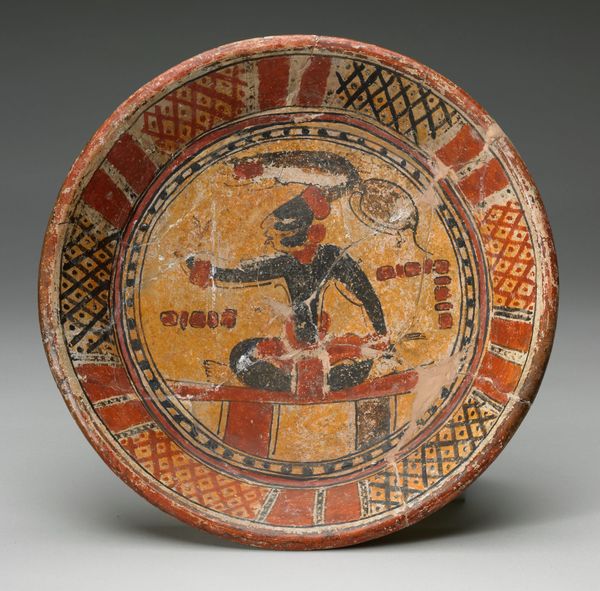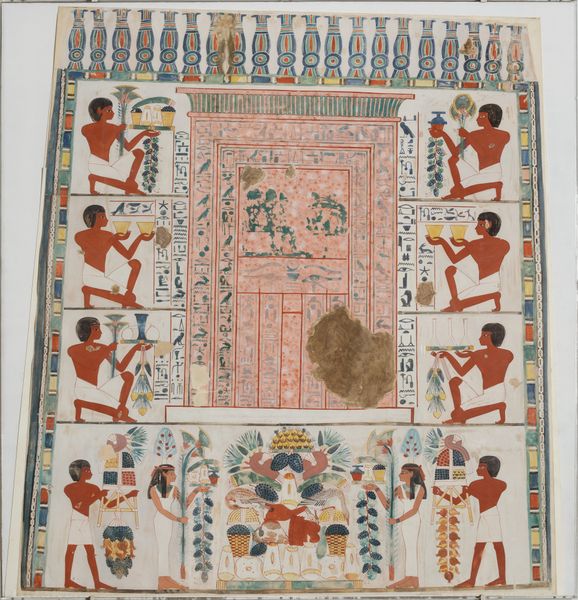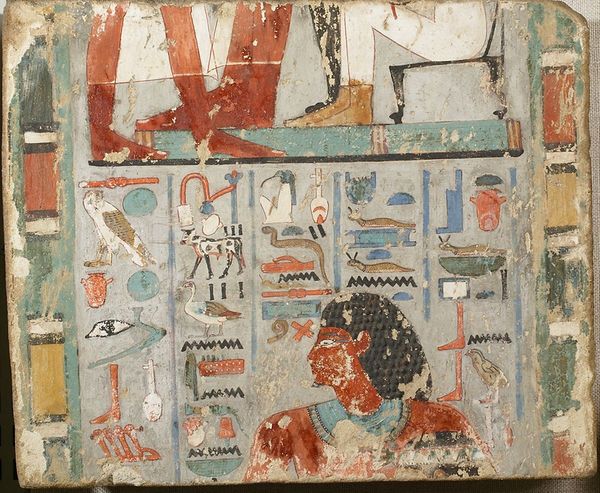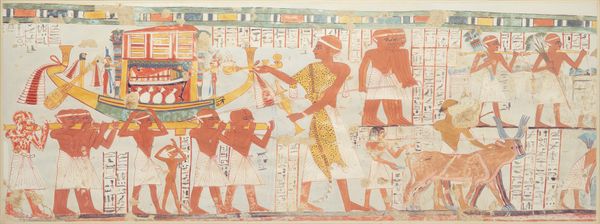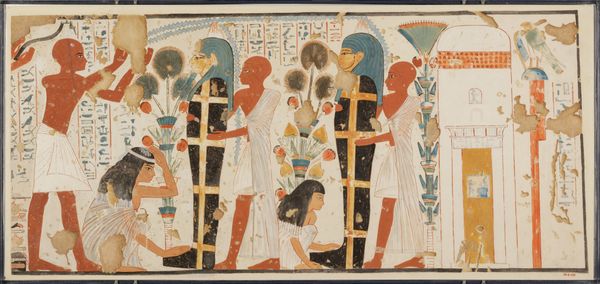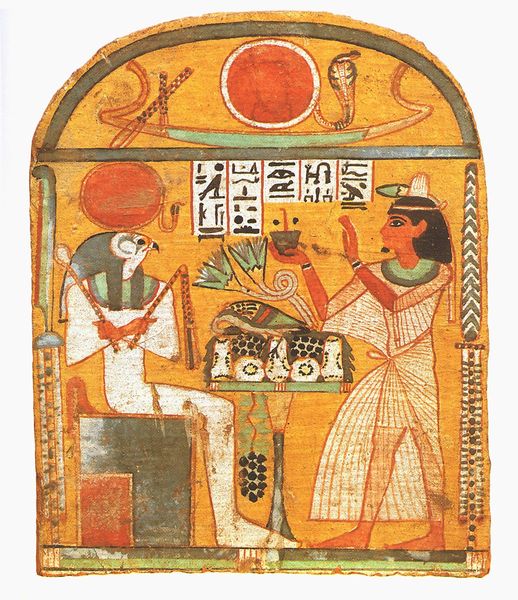
#
pattern heavy
#
natural stone pattern
#
toned paper
#
historical fashion
#
ethnic pattern
#
metallic object render
#
3d modeling
#
layered pattern
#
cutout
#
ethnic design
Copyright: Public domain
Curator: I'm struck by the stillness, even reverence, evoked by this piece. It's deceptively simple in its rendering, but there is a sense of profound symbolic weight here. Editor: Indeed. Let's consider the artwork. This is the Stela of Inamennayefnebu, dating back to 712 BC from Ancient Egypt. Curator: The figures! Note the figure on the left—the distinctive falcon head immediately signals Horus, one of the most significant deities in the Egyptian pantheon. The sun disk above echoes this potent symbolism. Editor: Absolutely. The image presents a tableau of ritual and power. The figure of Inamennayefnebu stands in an attitude of prayer, likely before the god Horus, indicated on the left. This kind of stela often served as a means for individuals, often priests or officials, to connect with the divine and ensure their place in the afterlife. It served almost as an advertisement of the individual's piety to secure favorable outcomes in their passage to the next world. Curator: Notice too the detail of Inamennayefnebu's garments and jewelry, indicative of status but also adhering to very specific representational conventions of the time. His gesture is formalized, the placement of the arms speaking to very precise, performative action. The psychological aspect interests me most - to feel empowered simply from your belief or from something of importance to your people. Editor: Those details were of course crucial. Artistic patronage during this period, during what's known as the Third Intermediate Period, served to reinforce social hierarchies and legitimise ruling elites. So this stela becomes a sort of political artifact as well, advertising not only personal piety, but also the power and privilege associated with certain social positions. It says something about social aspirations and its intended audiences would be part of his local community, his priesthood perhaps, his relatives. Curator: It becomes a document in image form, loaded with embedded social meaning! Editor: Precisely. Consider that these objects were frequently placed in tombs or temples. Public and private power merged in these ritual settings. Curator: Considering the continuity of symbols, from this early representation of religious and political power to our current iconography... that's remarkable, isn't it? Editor: It certainly gives one pause to consider the lasting power of images to shape our understanding of the world.
Comments
No comments
Be the first to comment and join the conversation on the ultimate creative platform.
